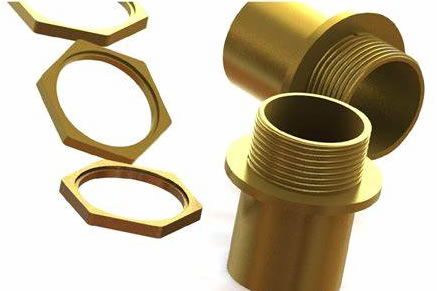
How To Plating Step By Step?
The manufacturing process known as plating includes many steps and requires considerable pretreatment, treatment and post-treatment steps. While there are several different kinds of plating techniques, this how-to guide is intended to provide the basic procedural steps for the most popular plating process, electroplating.
Step 1: The Mechanical Finishing Pretreatment Process
You will first need to pretreat the substrate to prepare it for plating. This is necessary to remove all harmful contaminants, oils, and greases that may hinder the plating process from delivering uniform and satisfactory deposition rates. Depending on the plating materials and base materials you use, this may involve several steps of cleaning, rinsing, and other mechanical pretreatment processes.
You need to determine if mechanical finishing techniques are required before you clean the substrate. For example, if your product includes welds, burrs or other surface inconsistencies, you will likely need to smooth out its surface. This is because electroplating does not hide or remove surface inconsistencies. You might need to perform blasting, deburring, shot peening and/or tumble finishing may be required Depending on the type of substrate and level of treatment needed.
Step 2: How to Properly Clean the Plating Substrate
Once the base material has been properly finished, it is time to clean the substrate by running it through acidic or basic chemicals. Some base materials respond to one cleaning, while others require multiple runs. After each treatment, you should thoroughly rinse the substrate in water to properly remove all chemical cleaners.
Consult your chemical supplier to determine what the best type of cleaner for your unique project will be. However, here are some basic guidelines for choosing a cleaner:
Alkaline cleaners: Products that contain chemicals such as borax, phosphates, carbonates and synthetic detergents work well with metals such as steel, stainless steel, steel alloys, copper, nickel, titanium and lead.
Inhibited Alkaline Cleaners: Negative caustic reactions can sometimes occur with brass, zinc, aluminum, bronze, and tin, and inhibited alkaline cleaners can help you skirt these problems.
Acidic cleaners: Hydrochloric acid, sulfuric acid, and other acidic cleaners are recommended for metals such as magnesium.
Step 3: Determining Proper Cleanliness
The needs of your project determine how clean you need to get your substrates. For example, some electroplating processes require only the removal of bulk soil and dirt, while others require complete removal of grease and oil. Here are a few effective ways to test the cleanliness of your substrate:
Wipe test: simply use a clean cloth to wipe the surface of the substrate. If residue or dirt appears on the towel, further cleaning is required.
Water break test: Upon final rinsing of the product, hold the base material still and take notice of how the water pours off the material. If it falls off in one large sheet, then it is free of oily residue. If the water beads, oil, and grease still remain.
Reflectivity: Cleanliness of some metals can be easily gauged by the reflectivity of the product.
Step 4: Setting Up the Electroplating Station
Once the proper level of cleanliness has been achieved, it is time to begin plating. The process requires a rectifier or other source of direct current, a tank or barrel, an anode, a cathode and the proper plating solution (usually water). The anode consists of solid pieces of the metal you are attempting to deposit and the cathode is the substrate.
Setting up your electroplating station is fairly easy. First, attach the negative electrical lead of the rectifier to the substrate. Then, place the positive lead directly in the plating solution. Now, when you turn on the electrical current, the anode oxidizes and forms positively charged ions, which are reduced at the cathode. The result of this is metal deposition.
Step 5: The Electroplating Process
The deposition begins as soon as you turn on the electrical current. The longer you expose your product to the current, the thicker the layer of plating will be. For different metals, different temperatures, voltage levels and immersion times are variables to consider. If you have purchased a prepared electroplating solution, then suggested settings for each factor should be printed on the container. In general, it is suggested that you use the highest voltage that will deliver adequate results, without creating bubbles in the solution.
Step 6: The Electroplating Post-Treatment Process
Once proper deposition has been achieved, post-treatment cleaning is often necessary to inhibit tarnishing. There is a variety of cleansers available on the market. Electrolytic polishing and other measures may follow electroplating, in order to improve corrosion resistance. For specific post-treatment cleaning suggestions, speak with your metal or chemical supplier.
Step 7: Waste Disposal
Most electroplating processes result in the creation of hazardous heavy metals. Due to high toxicity, these hazardous materials must be properly disposed of. To do this legally and effectively, you should pretreat plating wastewater prior to disposing of it. For specific steps on how to dispose of plating waste materials, it is suggested that you follow the National Pollutant Discharge Elimination System (NPDES) as outlined by the Clean Water Act (CWA).
XTJ is a leading OEM Manufacturer that is dedicated to providing one-stop manufacturing solutions from prototype to production. We are proud to be an ISO 9001 certified system quality management company and we are determined to create value in every customer relationship. We do that through collaboration, innovation, process improvements, and exceptional workmanship.

